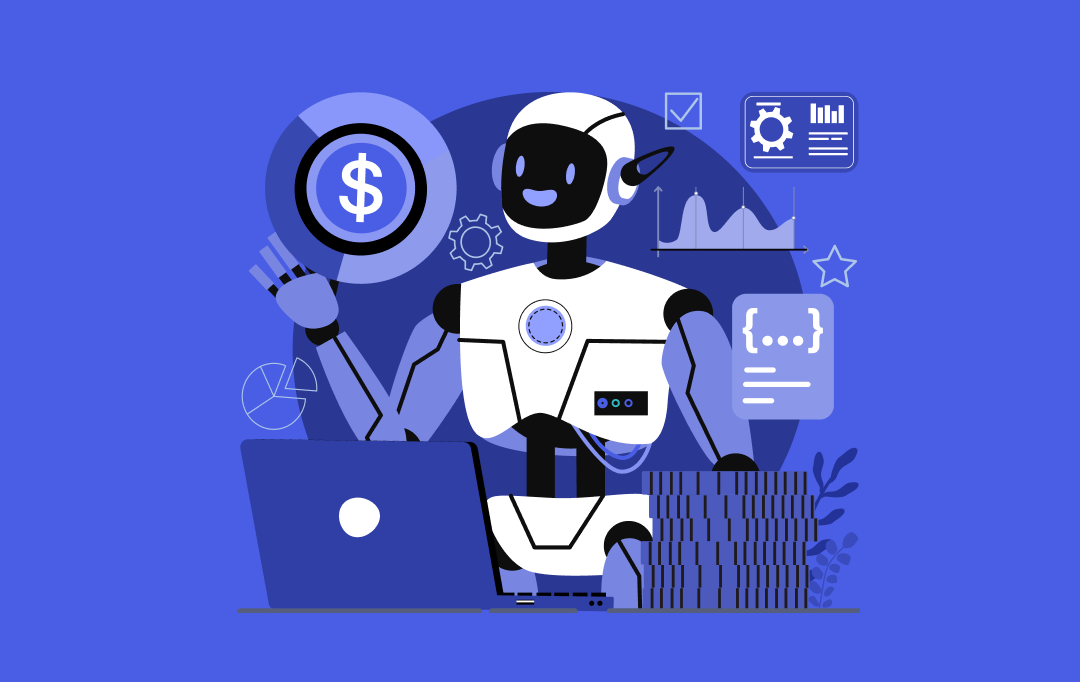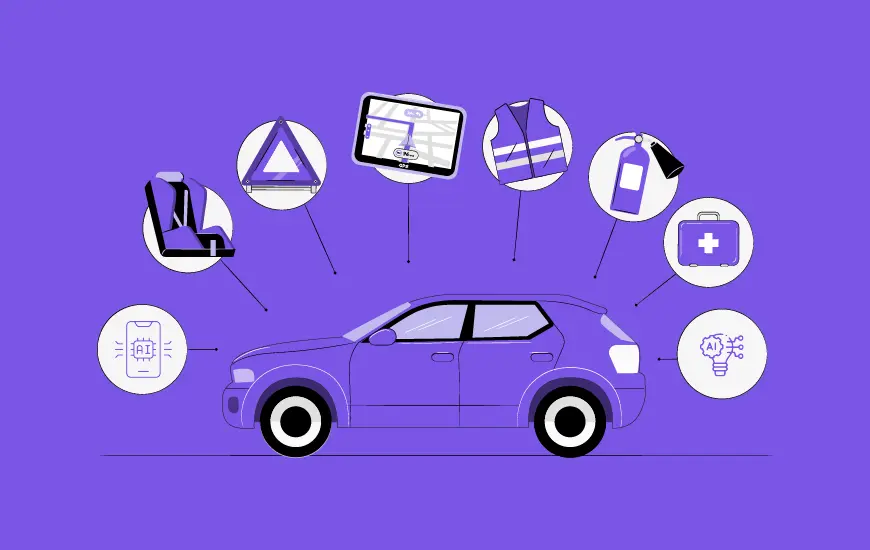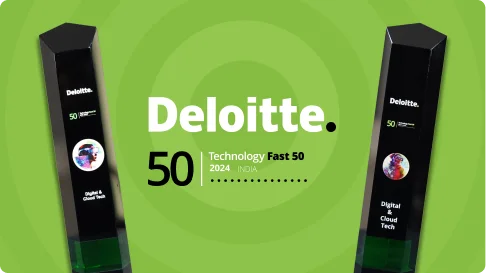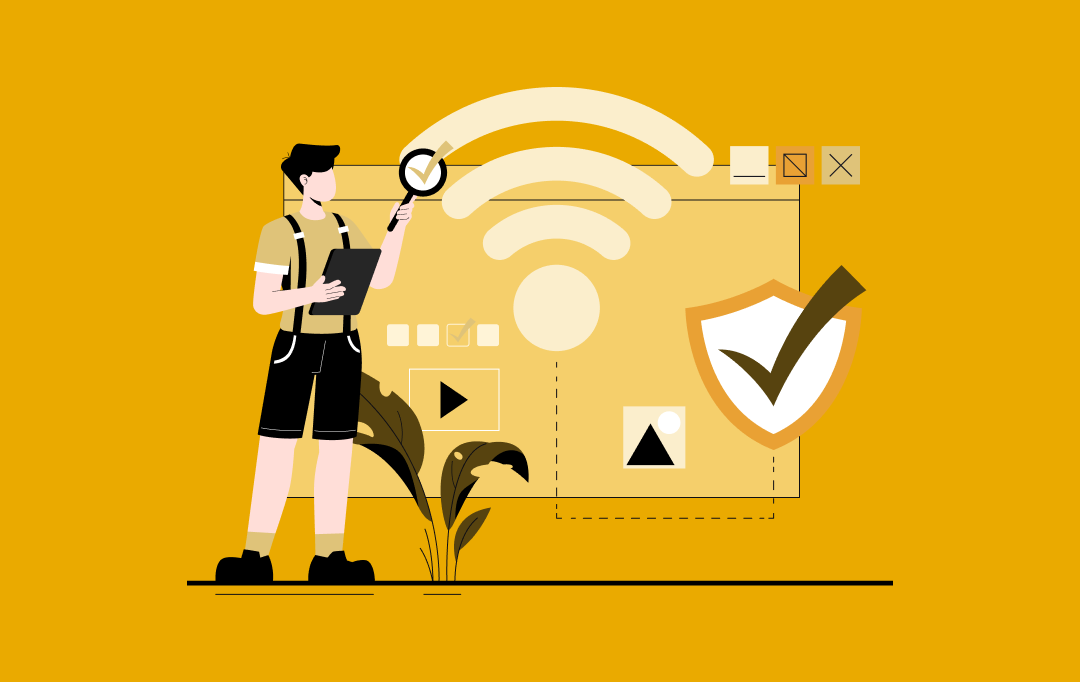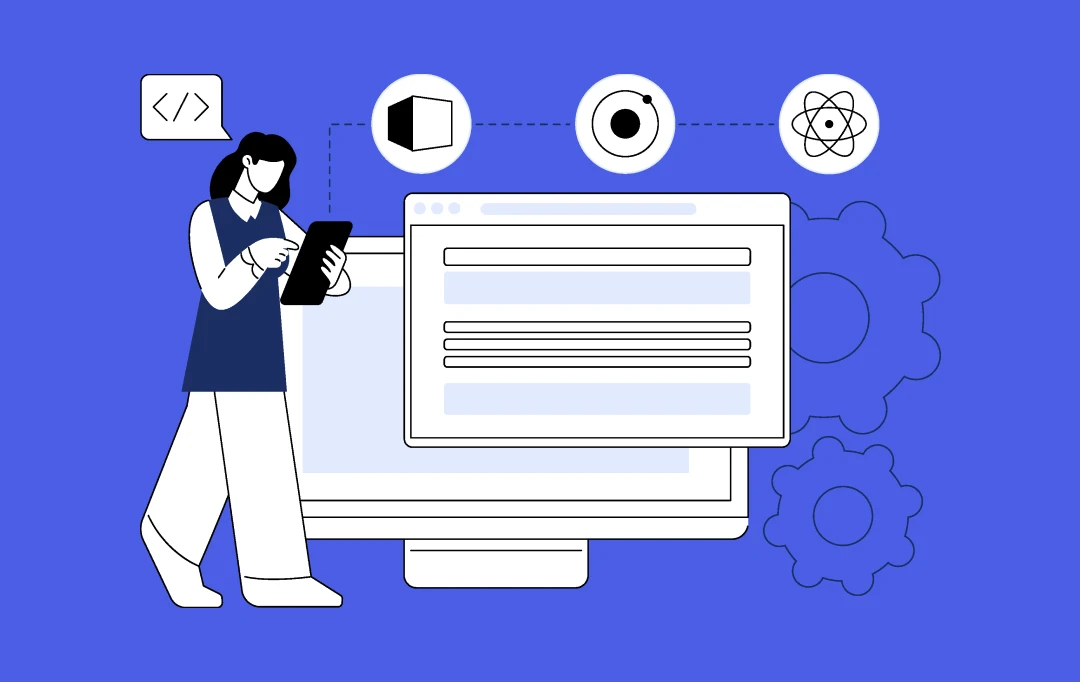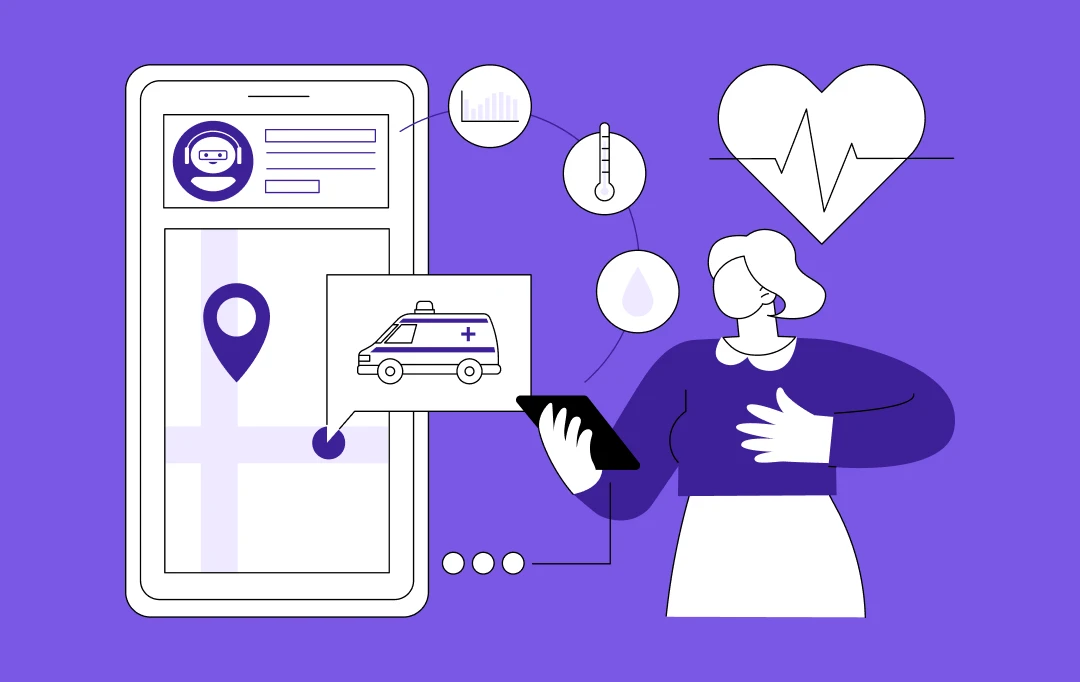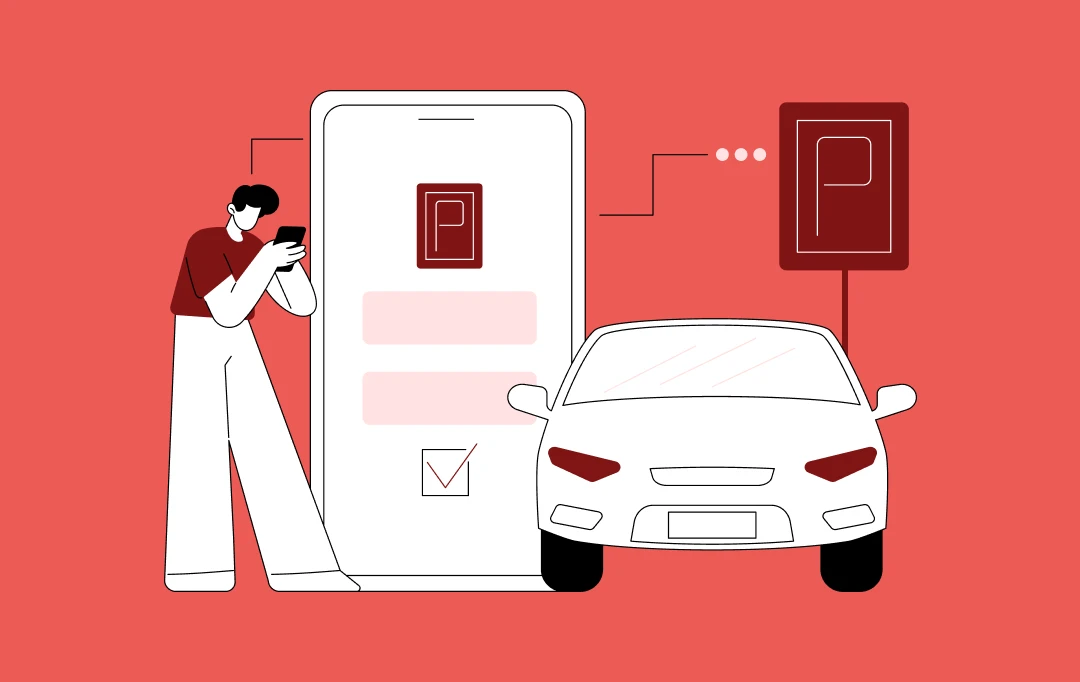- How Green App Development Differs from Traditional Development
- Green App Development vs. Traditional Development
- Key Features of Eco-Friendly App Development
- Energy-Efficient Frameworks
- Optimized Data Transfers
- Smart Caching and Offline Capabilities
- Adaptive Performance
- Sustainable Cloud Hosting
- Minimal Dependencies
- Optimize Visual Assets
- Auto Screen Brightness
- Sustainable UI/UX Design
- Green AI Practices
- Benefits of Green App Development
- Environmental Impact
- Reduced Server Infrastructure Costs
- Improved App Energy Efficiency
- Attracting Green-Minded Users
- Enhanced Brand Image and Loyalty
- Contribution to Global Sustainability Goals
- Long-Term Cost Savings
- Appeal to Eco-Conscious Investors
- How to Develop a Green App – A Step-by-Step Process
- Define Clear Sustainability Goals
- Choose an Energy-Efficient Architecture
- Design a Minimalist UI/UX
- Choose a Green Tech Stack
- Implement Eco-Friendly Functionalities
- Test for Environmental Performance
- Monitor and Maintain for Long-Term Sustainability
- Green App Development Challenges & How to Overcome Them
- Challenge: Keeping the App Energy-Efficient
- Challenge: Diverse Regional Standards
- Challenge: Data Integrations
- Challenge: Limited Green Resources
- Costs for Green App Development
- Real World Examples of Green Applications and How They Are Making a Difference
- Yayzy
- Too Good To Go
- PaperKarma
- Go Green with Appinventiv
- FAQs
The climate clock is ticking fast, and the mobile apps can’t stay on the sidelines. These apps may seem tiny in their impact, but they are quietly becoming a major climate offender, contributing significantly to raising global warming and greenhouse gas emissions. Currently used by over 7 billion people, mobile apps generate nearly 0.75 grams of CO2 equivalent emissions. With 5 billion users spending three hours daily on these apps, they contribute to 6% of digital CO2 emissions.
Behind every scroll, swipe, or stream is an energy demand from fossil fuels. From constant data transfers and location tracking to background activity and inefficient codebases, an average smartphone app can become a silent energy hog.
If the internet were a country, it would be the fourth largest polluter in the world after China, the US, and India, responsible for nearly 4% of global greenhouse gas emissions (Source: The ShiftProject). And this number is rising rapidly, with over 137.8 billion apps downloaded in 2024 alone (Source: Business of Apps). The collective effect is massive.
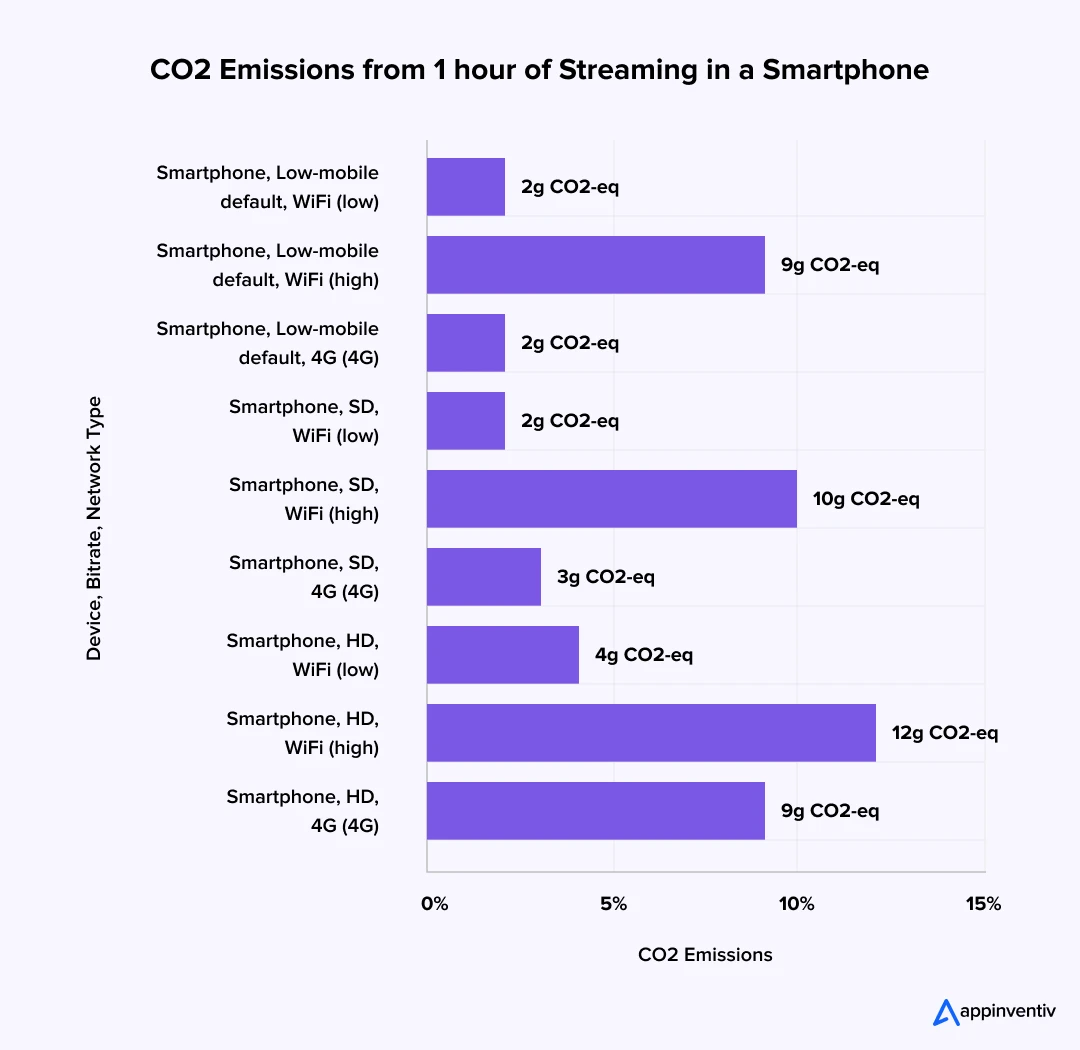
This is why modern consumers increasingly expect sustainability. A Nielsen survey found that 81% of global consumers believe companies should improve the environment.
This creates a pressing need and a lucrative business opportunity to develop green apps. By adopting sustainable app development practices, entrepreneurs can reduce backend energy loads, lower infrastructure costs, meet evolving regulatory standards, enhance brand image, and most importantly, secure investment opportunities and attract “green-minded” customers.
Are you curious to know more about the world of eco-friendly apps and how they are shaping a sustainable digital future? Then ride on this green app development guide. Here, we will walk you through what it truly means to build an eco-friendly app, eco-conscious features, sustainable practices, the development process, the tech practices that matter, challenges, and how to overcome them while doing good for the planet.
Build eco-smart apps that slash 3.7% of global greenhouse gas emissions and boost your bottom line.
How Green App Development Differs from Traditional Development
Green app development refers to designing, building, and maintaining mobile applications with minimal environmental impact throughout their lifecycle. It focuses on energy efficiency, responsible data usage, low-resource architecture, and sustainable infrastructure.
Unlike traditional development, which often prioritizes performance and features without considering environmental costs, green app development balances functionality with sustainability. This means optimizing battery usage, minimizing background processes, reducing server calls, and eliminating bloated code that unnecessarily taxes devices and networks.

Green App Development vs. Traditional Development
Here is a brief table outlining what sets green apps apart from average ones.
| Aspect | Traditional App Development | Green App Development |
|---|---|---|
| Code Optimization | Prioritizes functionality, often at the cost of bloat | Power-efficient code that balances the right cord between performance and energy |
| Data Usage | Heavy API calls and background syncing | Reduced data transfer, selective background activity |
| Hosting Infrastructure | Any available cloud/data center | Preference for green-certified, carbon-neutral data centers |
| Battery Consumption | Can be resource-heavy on user devices | Optimized to reduce battery drain |
| Design Philosophy | Focus on user engagement alone | Includes user behavior shaping to reduce digital overuse |
| Update Frequency | Frequent updates, often without resource impact consideration | Strategically planned updates to avoid unnecessary data loads |
| Business Value | Drives short-term engagement and growth | Balances growth with long-term environmental and brand value |
| AI Integration | AI features may be power-hungry and compute-intensive | Emphasis on Green AI capabilities to build sustainable and intelligent apps. |
Key Features of Eco-Friendly App Development
Building a green app is not only slapping on a sustainability label; rather, it is a practice about being intentional with every line of code, every design element, every server decision, and beyond. Here are some of the key features of green app development that set them apart from an average app:
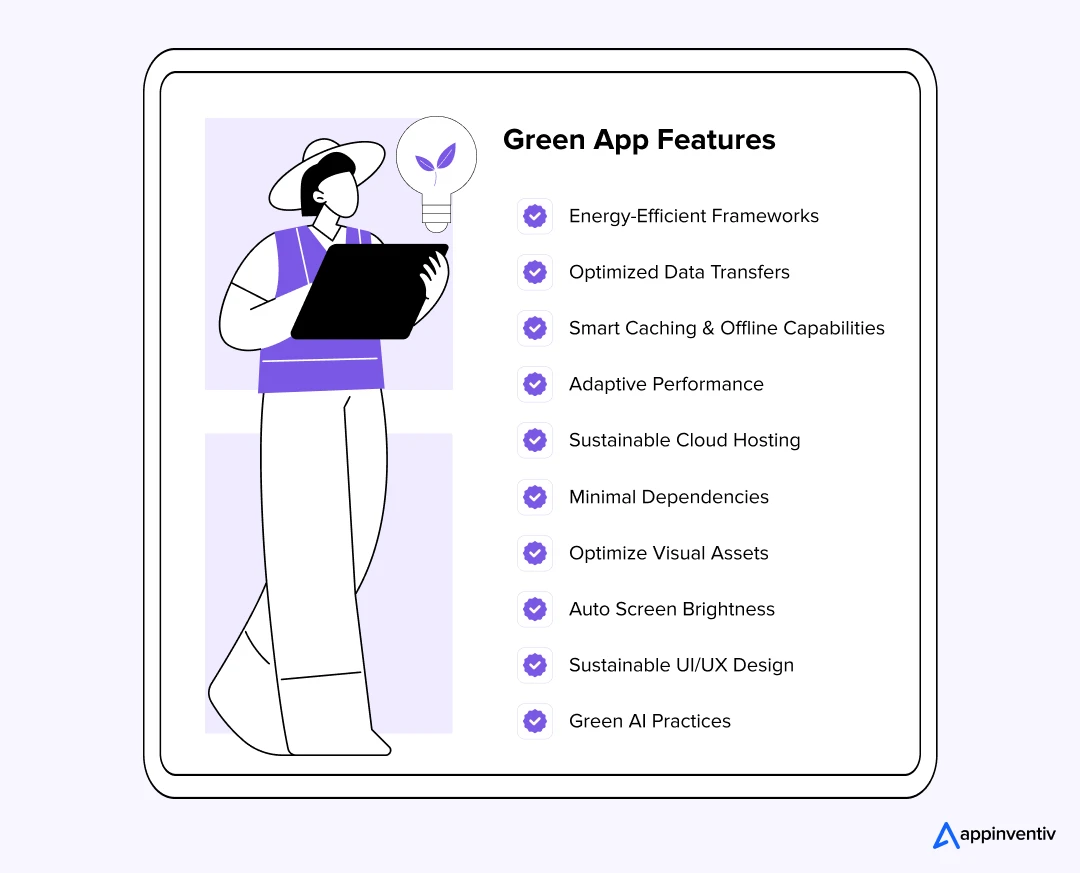
Energy-Efficient Frameworks
Green apps use lightweight, optimized frameworks that reduce the energy consumed by the app and the device it runs on. For example, cross-platform frameworks like Flutter or React Native can significantly reduce energy consumption compared to more resource-heavy alternatives.
Optimized Data Transfers
Green apps minimize how often and how much data they send or receive. They compress files, cache intelligently, and sync only when necessary. This helps cut down on network load and associated energy use.
Smart Caching and Offline Capabilities
One of the most significant features of green app development is efficient caching mechanisms. By implementing intelligent caching strategies, they store essential data locally, allowing users to access core features without constant internet access. This not only conserves server-side resources but also supports uninterrupted usage during travel, low-signal zones, or power outages
Adaptive Performance
Instead of running all features at full throttle, eco-friendly apps adjust their performance based on the needs. For instance, if a user’s battery is low or signal strength is weak, the app can automatically scale down visual effects, limit background activity, or reduce processing intensity.
Sustainable Cloud Hosting
Choosing cloud providers powered by renewable energy or those with carbon-neutral commitments is key to green app development. For instance, AWS or Google Cloud operates on 100% renewable energy.
Minimal Dependencies
Low-carbon footprint app development reduces unnecessary dependencies that can increase app weight and energy use. Opt for minimalistic or simple design elements. This helps minimize the app’s dependencies and ensures that only essential resources are used during operation.
Optimize Visual Assets
Avoid excessive animations or graphics, as heavy images and videos consume bandwidth and can increase energy consumption. Use next-gen formats like WebP or AVIF, implement responsive image loading, and compress files without compromising quality.
Auto Screen Brightness
Enable the app’s automatic screen brightness adjustment feature to conserve battery life and lower energy usage. This small yet impactful feature helps enhance user comfort and aligns with energy-efficient design principles.
Sustainable UI/UX Design
Green application development focuses on intuitive designs that facilitate responsible usage. For example, they can prompt users to engage with energy-saving features or encourage energy-efficient behaviors within the app.
Green AI Practices
AI is everywhere. You can’t afford to overlook this integral integration in app development. So, when building AI-powered apps with sustainability in mind, focusing on lightweight, energy-efficient models rather than large, compute-intensive ones that demand excessive resources and contribute to higher carbon emissions is crucial. This is where Causal AI helps win the game. Green app development can align with enterprise strategy via Causal AI to optimize resource allocation and reduce environmental impact.
Benefits of Green App Development
Green app development benefits go far beyond just environmental goodwill. It opens doors to broader advantages like cost savings, user loyalty, stronger market presence, etc. Let’s see how:
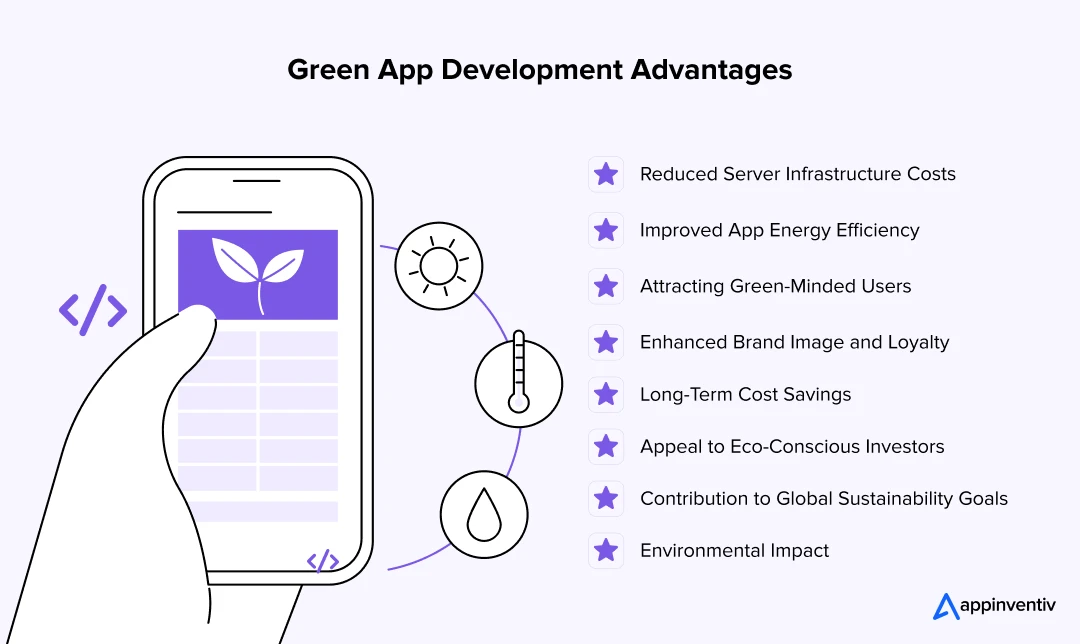
Environmental Impact
Green apps help reduce digital carbon footprints. How? These apps help reduce server energy consumption, optimize resource usage, and extend device battery life. Considering that the ICT sector could contribute up to 14% of global emissions by 2040 (Source: ScienceDirect), we can’t overlook the green app development benefits of lowering carbon footprints.
Reduced Server Infrastructure Costs
Modern green cloud technologies, such as low-power servers and intelligent load balancing, significantly cut energy use. This leads to lower operational expenses. For instance, businesses adopting energy-optimized cloud setups have reported 20–40% electricity savings.
Improved App Energy Efficiency
Eco-friendly apps consume fewer device resources. This helps extend battery life and improve device performance. Thus, users increasingly favor these apps over resource-heavy alternatives, enhancing their engagement and retention rates.
Attracting Green-Minded Users
Sustainability matters to modern consumers. A recent report revealed that 62% of consumers are willing to change their buying habits to reduce environmental impact, and nearly half are prepared to pay a premium for sustainable products (Source: IBM). This indicates that green app development attracts more users and gives a clear market edge.
Enhanced Brand Image and Loyalty
Building green apps is not just about environmental responsibility but also about gaining competitive advantages and improving a brand’s image. How? Companies that lead with green technologies are often viewed as forward-thinking and socially responsible. This reputation helps increase customer trust and strengthens brand image.
Contribution to Global Sustainability Goals
Sustainable app development supports the broader mission of reducing digital pollution and aligning tech practices with global frameworks. For instance, green app development practices align with the UN’s Sustainable Development Goals (SDGs), especially Goal 12: Responsible Consumption and Production.
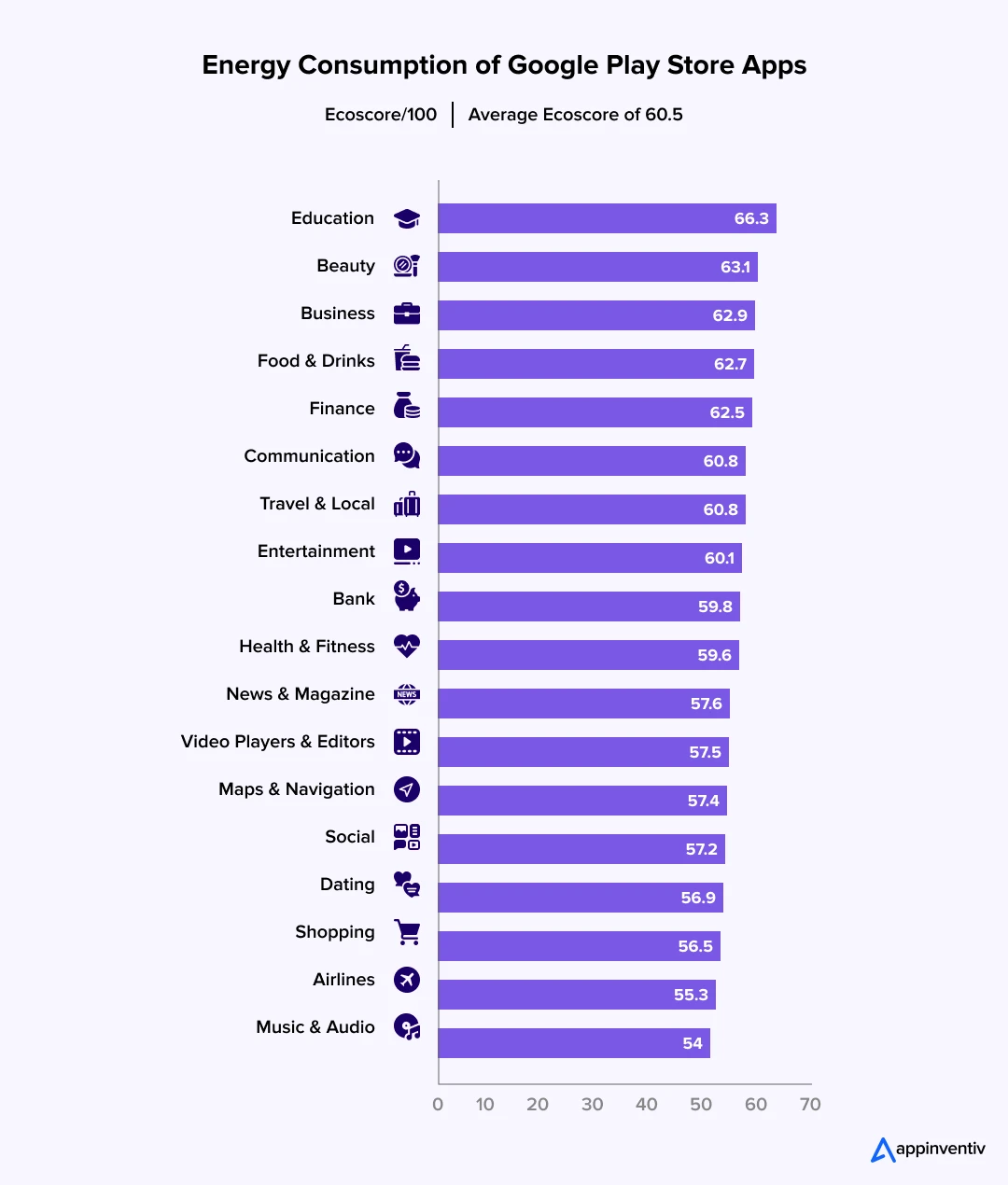
Long-Term Cost Savings
While green app development requires a significant upfront investment, these apps help businesses save on operational costs like server fees, network bandwidth, and energy consumption over time. Additionally, sustainable apps are easier and cheaper to maintain.
Appeal to Eco-Conscious Investors
Investors’ inclination in ESG (Environmental, Social, and Governance) initiatives has surged, with sustainable investments accounting for $35.3 trillion, or 36% of all professionally managed assets globally. This proves that companies building green apps are more likely to attract investment and business partnerships that align with sustainability values.
How to Develop a Green App – A Step-by-Step Process
Building a sustainable app is not just about adding energy-saving features. It is a holistic approach that demands sustainability to be embedded in every layer of design, development, and deployment. Not sure how to do it right? Worry not! Here is a step-by-step process of green app development. This will help entrepreneurs create genuinely eco-friendly digital products.

Define Clear Sustainability Goals
Before beginning with the actual green app development process, you must define what “green” means for your app and what the potential impact of green app development is. Is your goal to reduce backend energy consumption? Extend battery life? Replace wasteful physical processes? Save energy? Promote a sustainable lifestyle? Identifying these objectives early will help align your development efforts with broader environmental targets and achieve a holistic approach to sustainability.
Choose an Energy-Efficient Architecture
After defining the goals, the next step is to opt for serverless architectures, edge computing, or green cloud providers prioritizing energy-efficient data centers. Choose stateless services, efficient API calls, and asynchronous processing to minimize server usage and reduce carbon emissions.
Design a Minimalist UI/UX
Designing eco-friendly UI/UX is one of the most integral steps in green application development. While designing sustainable apps, keep interfaces clean and interactions purposeful. Light-weight visuals, dark mode options, intuitive navigation, and limited animations help reduce resource usage on user devices. This will result in lower battery drain and improved performance.
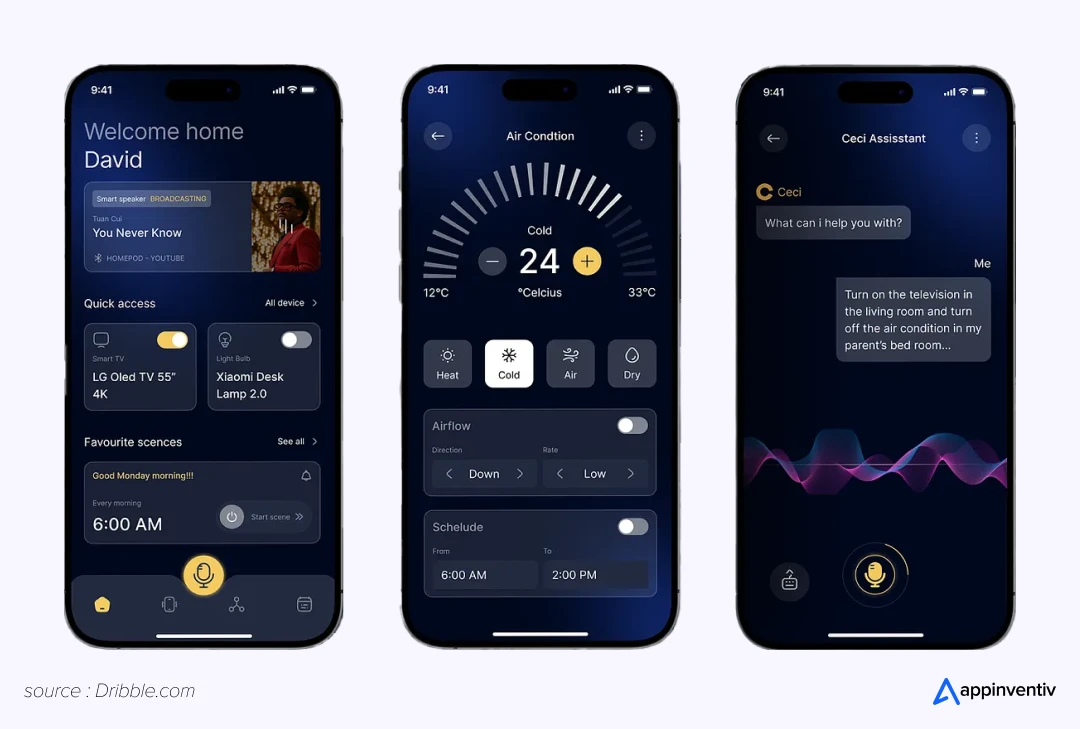
Choose a Green Tech Stack
Select frameworks, tools, and languages that are resource-efficient and well-suited to your app’s purpose. For instance, Flutter and Kotlin Multiplatform can reduce the need for separate codebases, and low-energy databases like Realm or SQLite minimize backend operations.
Implement Eco-Friendly Functionalities
This is where your green app starts to take shape. This stage integrates eco-friendly features that are not just nice-to-haves but reduce energy use. If your app requires integrating advanced tech like AI, Blockchain, or IoT, go for it, but only where it adds value. And when you do, choose lighter, on-device models instead of large ones that constantly rely on cloud servers.
Related Article: Blockchain App Development: An Insider’s Guide
Test for Environmental Performance
You are ready with eco-friendly app development, but the process is not yet completed. Before you deploy it to the targeted platform, you must test your app thoroughly using specialized tools to check its battery usage, data consumption, and server load. Focus on identifying and eliminating inefficiencies in real-world usage scenarios.
Monitor and Maintain for Long-Term Sustainability
After deployment, you must continuously monitor and maintain your green app to track its energy usage, user engagement, and system performance over time. This is an ongoing process of releasing updates, fixing bugs, integrating new features, optimizing performance, maintaining efficiency, and reducing technical debt.
Infuse sustainability into your app with our elite tech squad.
Green App Development Challenges & How to Overcome Them
Building a green app sounds like a great idea. Right? However, the road to eco-friendly app development is not smooth. Businesses face several roadblocks, from tech limitations to market pressures, when trying to go sustainable. But don’t worry. Every problem has a workaround. Let’s break it down:
Challenge: Keeping the App Energy-Efficient
The first and foremost challenge when building a green app is keeping the platform energy efficient. A green app should not consume much energy. So, if it drains too much battery or constantly hits the servers, it will defeat the purpose.
What You Can Do
Implement energy-saving features like offline mode, local caching, a carbon footprint tracker, etc. Moreover, avoid adding excessive animations unless they add real value.
Challenge: Diverse Regional Standards
Different regions have different regulations. What’s considered “green” in one place might not work in another. Regulations vary wildly depending on where your users are.
What You Can Do
Don’t leave compliance as an afterthought. Stay informed about the essential compliances from the start and adhere to universally recognized regulatory standards.
Challenge: Data Integrations
Going green can be a real challenge when your app constantly pulls real-time data from different sources. Incorporating real-time data from too many sources can consume a surplus of energy.
What You Can Do
Be selective. Only fetch the data that is necessary. You can reduce your data usage by processing it locally instead of relying on the cloud every time and using efficient caching policies.
Challenge: Limited Green Resources
Green app development is still catching up. Green app technology, tools, and experts are very limited. This scarcity can hinder your sustainable app development goal.
What You Can Do
Outsource to a fast tech app development company that builds sustainable digital solutions. Look for teams with proven experience in green cloud infrastructure, energy-efficient design, and clean coding practices.
Costs for Green App Development
On average, green app development costs range between $40,000 and $400,000+. While this offers a general ballpark, the actual cost to build a green app can increase or decrease depending on several critical components.
Are you curious about these cost-driving factors? Well, the elements influencing green app development cost are typically the same as those of any other mobile app. This includes feature complexity, UI/UX design, tech stack selection, and integration needs. However, green app development cost-driving factors also include an added layer of consideration focused on sustainability, performance optimization, and responsible resource use.
To help you better understand green app development cost, here is a breakdown of key cost factors that influence the investment. The table also covers their average impact on the overall cost to build a green app. These figures can help entrepreneurs estimate investments more accurately while weighing the long-term ROI.
| Cost Driving Factors | How They Impact Green App Development Cost | Estimated Cost |
|---|---|---|
| Green Cloud Infrastructure | Deploying to eco-friendly platforms like AWS or Google Cloud with carbon-aware scheduling. | $5,000 to $10,000 |
| Minimalist UI/UX Design | Designing simple and streamlined interfaces that reduce processing load and screen time. | $3,000 to $30,000 |
| Efficient Coding and Green App Development Practices | Writing optimized, clean, and reusable code reduces processing load and power usage. | $5,000 to $35,000 |
| Eco-Friendly Features | Integrating eco-friendly features like smart caching, offline support, dark mode, adaptive performance, etc. | $6,000 to $50,000 |
| Energy-Efficient AI/ML Models | Using compact green AI models that run on-device with minimal energy consumption. | $5,000 to $60,000 |
| Performance & Energy Testing Tools | Integrating tech stack like Android Profiler, Xcode Instruments, and Greenspector to assess energy usage. | $4,000 to $15,000 |
| Security and Compliance | Adding security measures like encryption, 2FA, and certifications (ISO 14001, GDPR), or applying for green grants. | $5,000 to $40,000 |
| Maintenance & Updates | Cost for regular performance optimization, new feature integration, bug fixing, and sustainability audits. | $4,000 to $50,000 |
Real World Examples of Green Applications and How They Are Making a Difference
While efforts invested in green app development often fail to make headlines, several mobile apps actively minimize environmental impact through thoughtful design and functionality. These apps go beyond advancing sustainability initiatives; they are built to enable it. How? They help directly reduce energy use, paper waste, and resource consumption in everyday life. Let’s explore some real-world examples of green apps to understand how they make a difference.
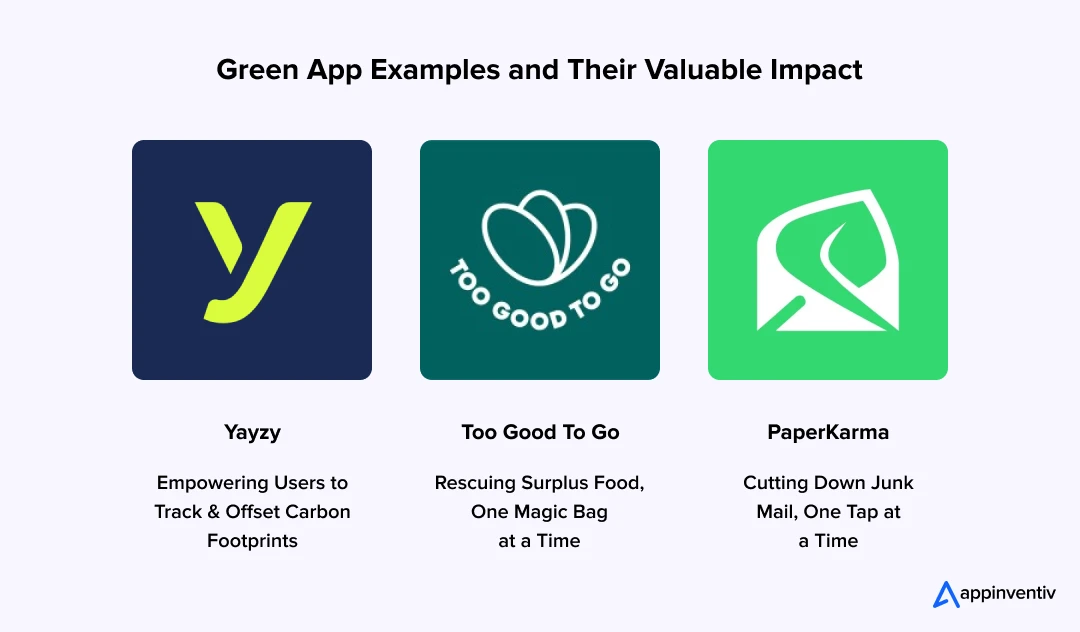
Yayzy
Yayzy, a London-based fintech startup, developed a green app to help users analyze their spending habits and calculate the carbon footprint of each purchase. It offers personalized suggestions to reduce emissions and options to offset them through verified environmental projects.
Impact: Yayzy’s integration with banking platforms enables users to make environmentally conscious financial decisions. This facilitates a culture of sustainability in everyday transactions.
Too Good To Go
Too Good To Go is a mobile app that ensures leftover food from cafes, restaurants, hotels, and shops doesn’t end up in the trash simply because it didn’t sell on time. The app connects users with local businesses offering “Magic Bags” filled with unsold but perfectly good food at a fraction of the original price.
Impact: With a growing community of over 9.7 million users and more than 22,000 partner businesses, the app has successfully saved over 14 million Magic Bags of food to date.
PaperKarma
PaperKarma is a mobile application designed to help users reduce paper waste by unsubscribing from unwanted junk mail, such as catalogs, credit card offers, and promotional materials. By streamlining the opt-out process, PaperKarma empowers individuals to take control of their mailboxes and contribute to environmental sustainability.
Impact: PaperKarma has helped users eliminate tons of paper waste by processing millions of unsubscribe requests. This helps reduce the carbon footprint linked to junk mail production and delivery.
Go Green with Appinventiv
Building an eco-friendly app is not just cutting carbon emissions and elevating eco-friendly practices. It is also about reinforcing your brand image, future-proofing your business, reducing long-term costs, and aligning with the growing expectations of green-minded consumers.
Of course, building an app with such capabilities requires expert assistance from industry leaders. This is where we come in. At Appinventiv, we don’t just build mobile apps. We create responsible digital products that balance the right cord between high performance, user experience, and environmental sustainability.
Whether you are starting from scratch or revamping an existing product, our team of 1600+ tech experts knows what it takes to create an energy-efficient, scalable, and future-ready app. As a leading mobile app development service provider, we have done this for many enterprises and emerging startups, and we can do it for you, too.
So, why wait? Embark on your journey of green app development with us and build an app that doesn’t just serve you and your users but also serves the planet.
Get in touch to turn your sustainable vision into an eco-friendly digital reality.
FAQs
Q. What is green app development?
A. Green app development is the process of designing, building, and maintaining mobile applications with sustainable choices at every stage, from concept to code to cloud. It focuses on energy-efficient coding, minimal resource consumption, and optimized user experience while reducing carbon emissions and hardware strain wherever possible.
Q. How much does it cost to develop a green app?
A. The cost to build a green app typically ranges between $40,000 and $400,000, depending on various factors such as app complexity, eco-friendly features, tech stack, cloud infrastructure, UI/UX design, and ongoing maintenance.
To get a more precise estimate for green app development cost, discuss your project idea with us now.
Q. What are some of the best green app development principles and practices?
A. Opting for the best green app development practices and principles creates the foundation for building sustainable apps. Here are some key principles of green app development:
- Write clean, modular code to reduce CPU and memory strain.
- Avoid bloated libraries or unnecessary third-party dependencies.
- Incorporate continuous performance profiling to identify and fix high-energy-consuming processes.
- Design a minimalist UI/UX to reduce screen brightness and resource-heavy animations.
- Choose cloud providers that offer green infrastructure and carbon-aware scheduling.
- Use lightweight, on-device AI models instead of energy-intensive cloud-based ones.
- Implement features like dark mode, offline functionality, and smart caching to save power.
- Optimize background processes and minimize unnecessary network calls.
- Regularly audit and update your app to maintain long-term sustainability and performance.
Q. Why does app sustainability matter?
A. Every digital action leaves a footprint. From server usage to battery drain, apps consume real-world energy. In fact, the tech sector currently accounts for nearly 3.7% of global greenhouse gas emissions, a number that’s expected to double by 2025 if no action is taken (Source: The Shift Project). Being a responsible entrepreneur, you can’t afford to overlook your digital products’ environmental impact anymore.
By prioritizing sustainability in app development, you can reduce your app’s energy consumption and lower emissions. This green app development practice doesn’t just help the planet but also benefits users with longer battery life and a smoother experience. On top of that, building a sustainable app can lead to long-term cost savings. What’s more? Today’s consumers are increasingly enchanted by eco-conscious brands.
This makes sustainable app development not just a smart choice for the planet, but for your business too.
Q. How to build a green app?
A. Here is a step-by-step process to build a green app.
- Define Sustainable Objectives
- Choose an Energy-Conscious Architecture
- Craft Minimalist UI/UX
- Choose a Green Tech Stack
- Implement Eco-Friendly Features
- Test for Environmental Impact
- Monitor and Maintain Long-Term Sustainability
To gain an in-depth understanding of these steps, please refer to the above blog.


- In just 2 mins you will get a response
- Your idea is 100% protected by our Non Disclosure Agreement.

Do you know what makes electric vehicles disruptive? So, the automakers, for a long time, thought that the EVs' powertrain, mainly their engines and transmissions, were the two deciding factors that set each EV apart from the rest. Fast forward to the present, the misconception is kind of not there anymore. The EV makers now…
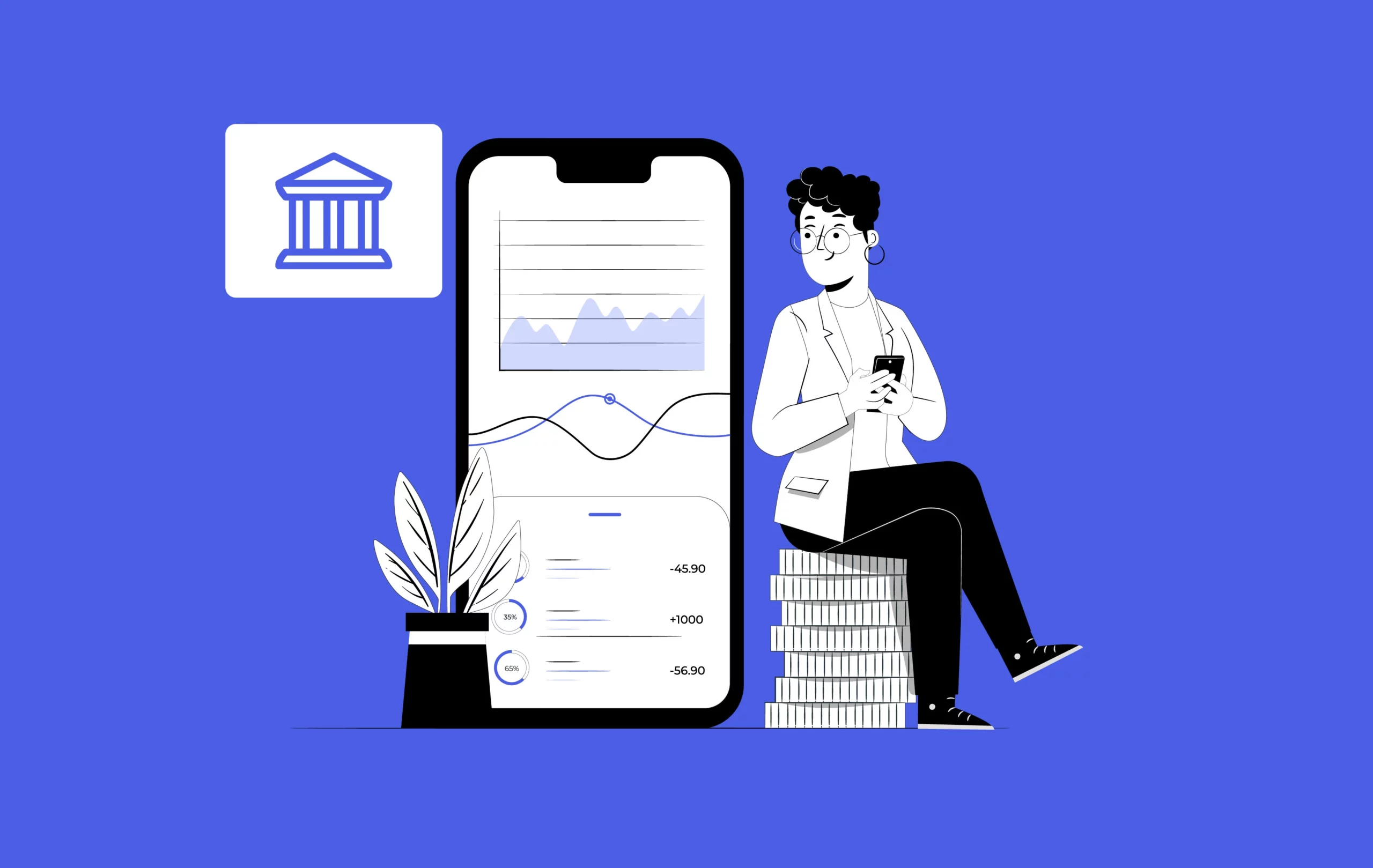
Remember when you first started your FinTech company? You probably had this vision of revolutionizing how people handle money. Fast forward to today, and you might be dealing with software that crashes during peak hours, customers complaining about slow transfers, and security vulnerabilities that keep you awake at night. The truth is, this is where…

Outsourcing product development is not just a buzzword or a futuristic concept; it is a present reality in the modern business world. What started as a trend during the COVID-19 pandemic has become a new norm for businesses across industries. The Grand View Research report indicates that the global business process outsourcing market will hit…
